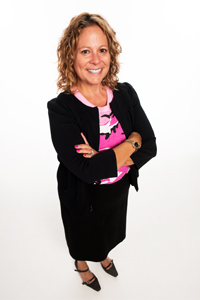
Last week I met a courageous woman named Terri Levine. She doesn’t jump out of perfectly good airplanes or leap tall buildings in a single bound, but she is somewhat of a super-s/hero in my book. Every day, she faces the kind of pain that I shudder to even contemplate and yet, she keeps on keepin’ on in her work as a conscious entrepreneur and business coach. She was a speaker at a marketing conference I had attended and not only was I was deeply moved by her passion, her creative business savvy and impeccable integrity, but also devotion to a cause that is both personal and universal for her.
What is RSD?
Reflex Sympathetic Dystrophy (RSD) also known as Complex Regional Pain Syndrome (CRPS), is a chronic pain, neurological syndrome. RSD is a malfunction of the central nervous systems, which causes pain and additional symptoms. RSD effects millions of people in the United States. This is not a new disease. RSD has been documented all the way back to the Civil War. If not treated aggressively and correctly RSD spreads rapidly.
When and how were you diagnosed?
I was diagnosed when I tore my achilles tendon about 6 years ago. Even though my leg was set in a full cast I was screaming 6 hours a day with pain and went to over 13 doctors until I found a doctor who diagnosed me.
What keeps you going in the face of the horrific pain you experience?
I can either have a pity party or I can do good work in the world. I prefer to do good work. Focusing on others takes the focus off me and allows me to make a difference in the world.
What is the Terri Levine Foundation For Children with RSD?
I developed this foundation because I hate to think of the pain that a child suffers from each day with this disease. Imagine pain so severe the breeze of someone walking by causing excruciating pain so intense it’s as if someone just lit you on fire, the vibration of a vacuum cleaner shooting through you like knives, or muscle spasms so strong your body shakes uncontrollably. Imagine not being able to roll yourself over or sit up without help, not being able to swallow, waking up blind, or trying not to breathe because it causes too much pain. Being stuck in bed, feeling so isolated and alone, while life passes by and everyone you once knew moving with it, leaving you behind. Ketamine infusions (the only thing that takes away some of the pain) are $500 each day and to start you need to have 10 of them back to back. Insurance won’t cover this because it is an “experimental” drug. So I developed the foundation to raise funds to help children with RSD get the medical care they need. All funds raised by The Terri Levine Foundation for Children with RSD go directly to helping these children.
Besides the obvious physical implications of having the condition, what emotional toll does it take on those with the diagnosis?
RSD may have profound psychological effects on patients and their families. Many with RSD suffer from depression, anxiety or post-traumatic stress disorder. The psychological impact of chronic pain from RSD/CRPS and the impact on coping can be serious. Chronic pain is often associated with depression and anxiety. This can include not enjoying the usual pleasures of life, crying spells, a lack of drive or a-motivation, decreased ability to cope with even minor stressors and frustrations, irritability, a diminished sexual drive, social withdrawal from others, and a loss of self-esteem. Intrusive rumination or tendency to worry and think about sad or distressing things or problems without resolution can become problematic. In addition, with the development of a chronic health problem, one can become increasingly preoccupied with health concerns and pay too much attention to some minor complaint that previously would have been ignored, but now may be seen as indicating something potentially serious.
RSD pain is ranked 45 on the McGill pain index, which means it is rated as the most painful chronic pain disease that exists. It is above cancer(non-terminal), and both medicated and non-medicated labor/delivery.
RSD/CRPS is often called the “Suicide Disease,” because it causes so much pain that the patients are in greater risk of taking their own life.
In addition to mainstream medical intervention, are there integrative modalities that can be helpful?
Two major approaches to the medical treatment of early RSD exist: sympathetic blockade and anti-inflammatory therapy. Although these are not mutually exclusive, the order of usage is generally specialty-dependent, with anesthesiologists/surgeons starting with the former and internists/rheumatologists starting with the latter.
* Anti-inflammatory medications (corticosteroids, calcitonin)
* Although nonsteroidal anti-inflammatory drugs (NSAIDs) may provide some symptomatic pain relief in patients with RSD, they are not effective in altering the skin changes or natural history of the process and thus play only a supportive role.
* Spinal cord stimulation: typically works 3 months or less
* Ketamine infusions: works to temporarily alleviate some pain in some patients but does not stop the disease process
How can people get involved?
Is there anything else you would like folks to know?
Because currently
there is no cure for RSD, the goals of treatment include: 1) controlling and minimizing pain to the greatest extent possible; 2) restoring function to the RSD-affected limb; 3) preventing progression of the disease process to the late stage; and 4) improving the patient’s quality of life and psychological functioning.”
And we want to help children have the greatest joy in life as possible.


